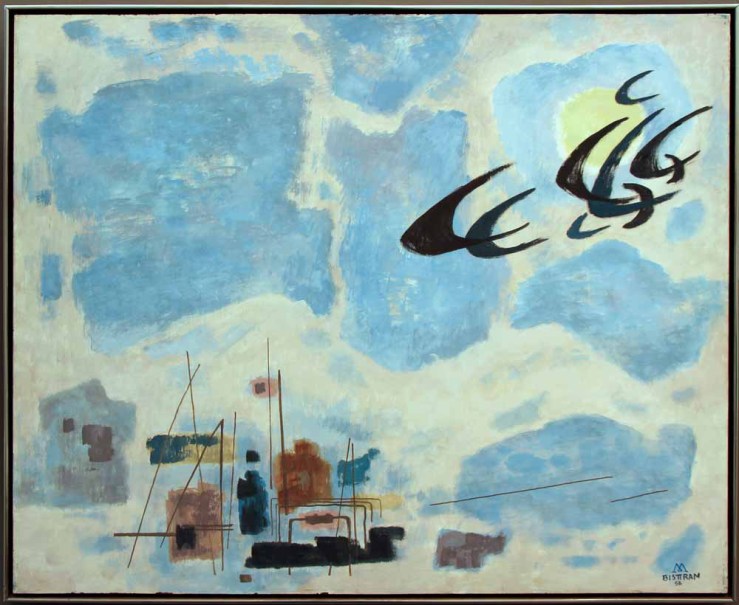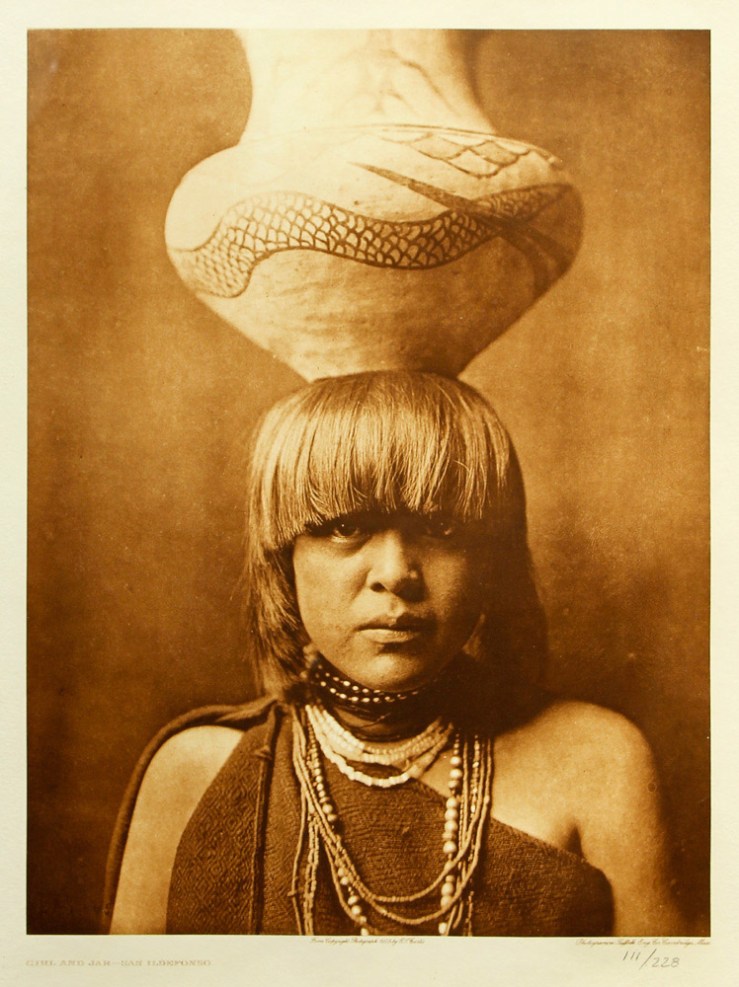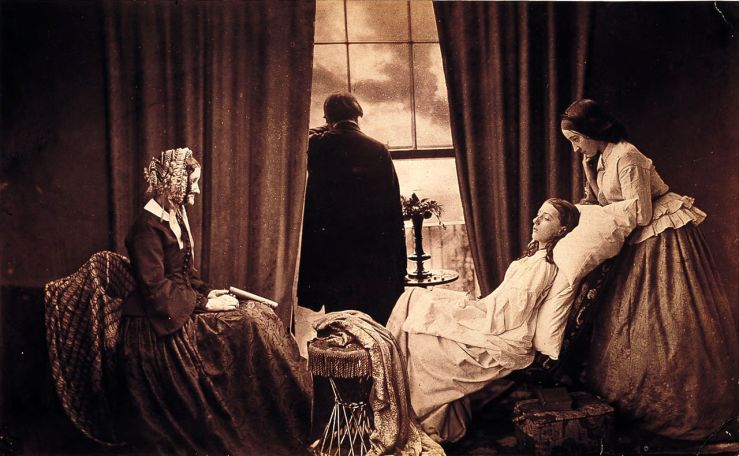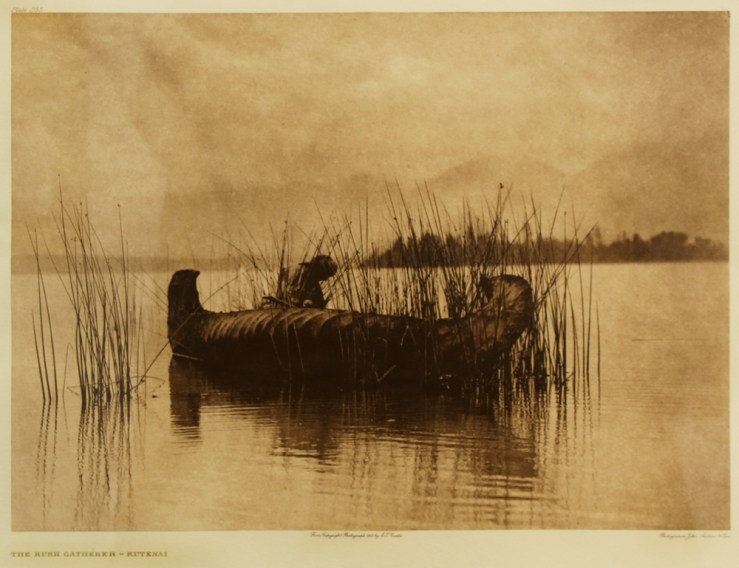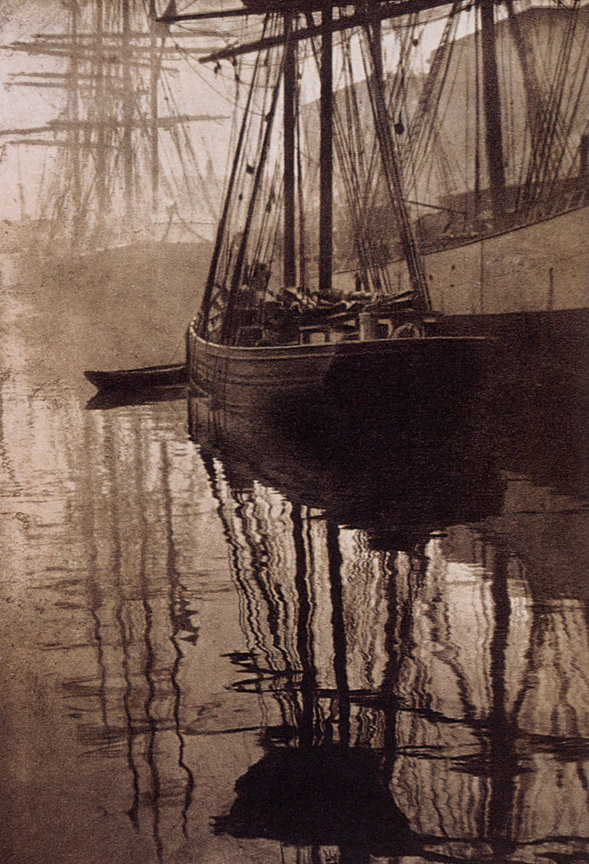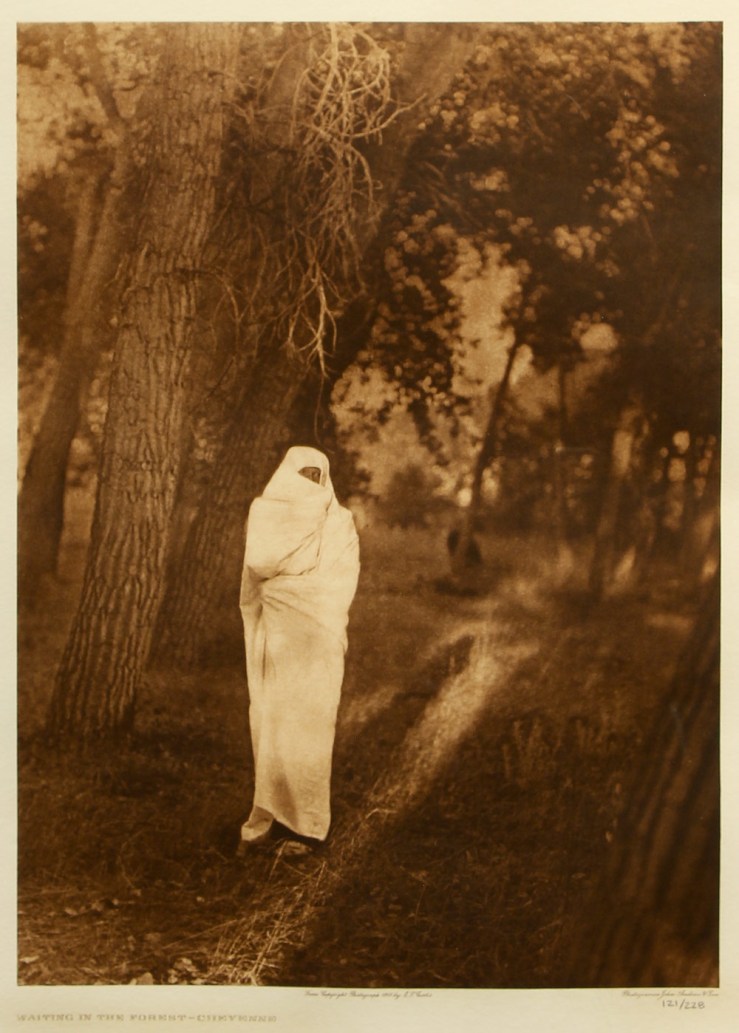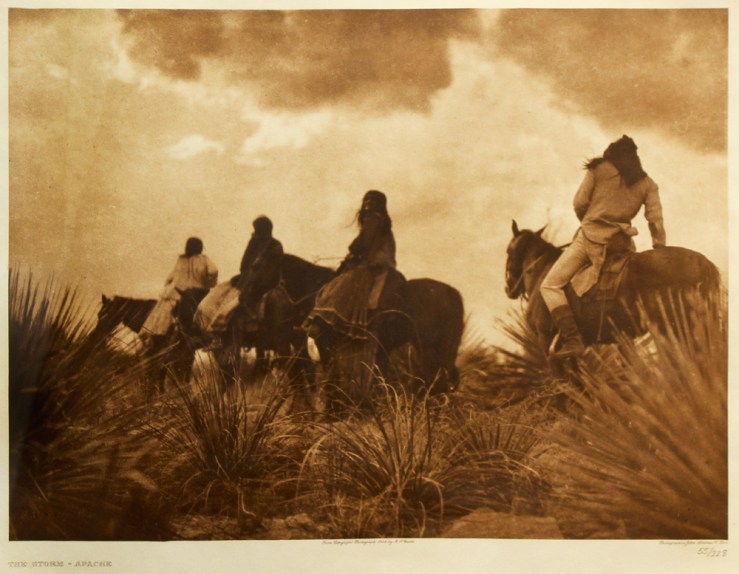 Mabel Dodge Luhan and Georgia O’Keeffe
Mabel Dodge Luhan and Georgia O’Keeffe
If you visit our SPRING OF MODERNISM show this month, two things will become abundantly clear about the 20th century artists in the exhibition. Firstly, they’re all linked, in one way or another, to the 1913 Armory Show in New York City. Secondly, they are all tied to each other. In fact, the modernists of the Santa Fe and Taos art colonies are so intertwined that we tried and failed to create a chart of their relationships. There are so many connections, it reminds us of Gertrude Stein’s Paris! Here’s just one line of the friendship chain, which begins with Stein herself:
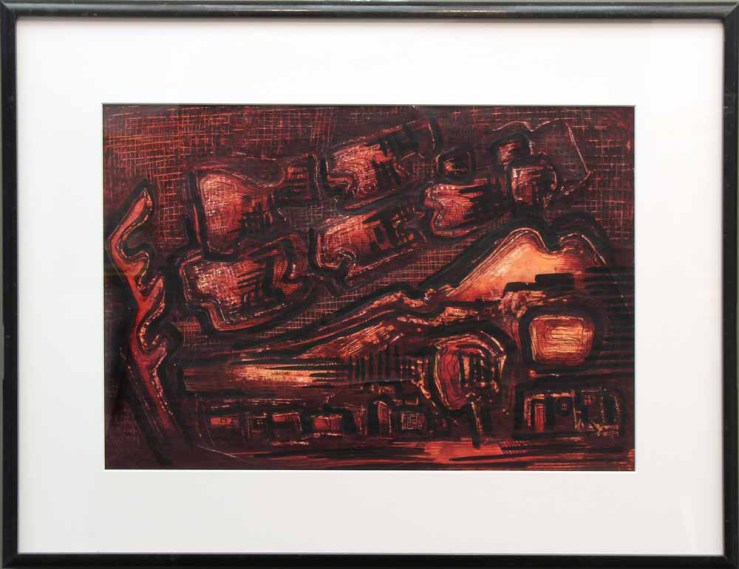 Cady Wells, Taos 1947, Ink and Watercolor on Paper
Cady Wells, Taos 1947, Ink and Watercolor on Paper
WELLS
Cady Wells (1904-1954) knew Luhan and O’Keeffe and studied under Dasburg. He grew up in Southbridge, Massachussets and traveled extensively as a young man, studying music and the visual arts before deciding to become an artist in his late 20s. He moved to New Mexico in 1932, where he found an enthusiastic mentor in Dasburg and drew inspiration from the rich culture of the Desert Southwest. The Smithsonian American Art Museum writes:
Portraying the Southwestern landscape in watercolor, Wells moved through various modernist idiots. His early work incorporated gestural, calligraphic lines suggestive of Chinese ideograms. Later he investigated the structure of natural forms [and the] pattern-like appearance of the landscape. Influenced by Dasburg, Raymond Jonson and Georgia O’Keeffe, Wells developed a personal semi-abstract style that brought considerable praise from his peers.
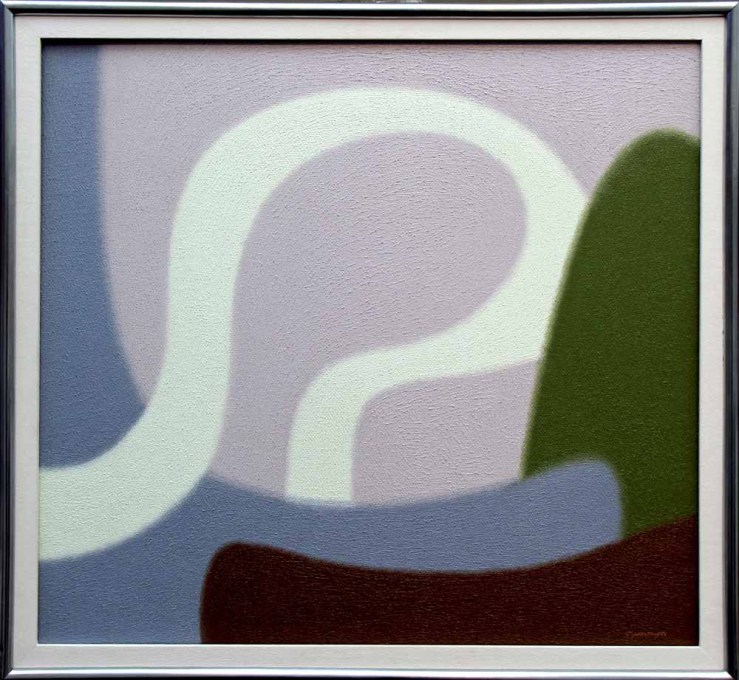 Raymond Jonson, Oil No. 12, 1958, Oil on Canvas
Raymond Jonson, Oil No. 12, 1958, Oil on Canvas
JONSON
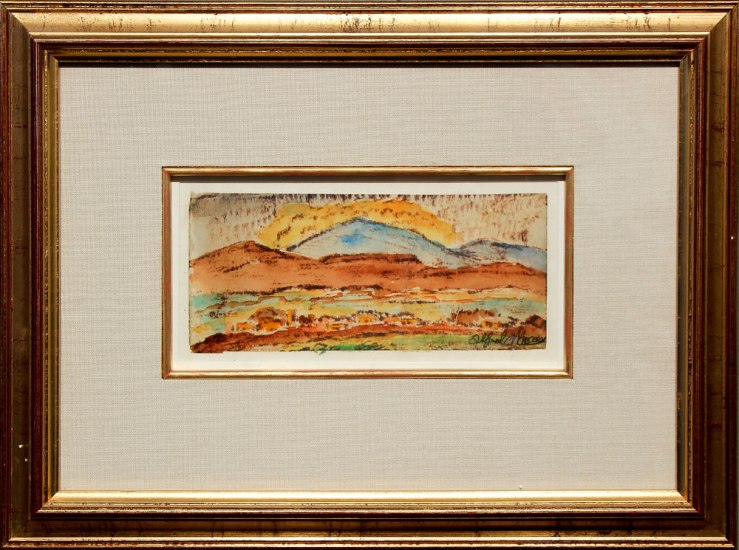 Alfred Morang, Blue Mountain, Yellow Sky, Ink and Watercolor on Paper
Alfred Morang, Blue Mountain, Yellow Sky, Ink and Watercolor on Paper
MORANG
As a young man, Lippincott’s teacher Alfred Morang (1901-1958) suffered from tuberculosis. He left his home in Portland, Maine in 1937 and came to New Mexico to recover in a dryer climate. The reports vary, but when Morang got off the train he was met by Randall Davey or Raymond Jonson, two of the city’s most established modernist artists. Morang’s bohemian manner quickly charmed the Santa Fe art world, and the City Different became his permanent home.
Late in his life, Morang moved to a Canyon Road studio just behind Claude’s Bar. Just across the street was an artist and writer’s compound run by Agnes Sims.
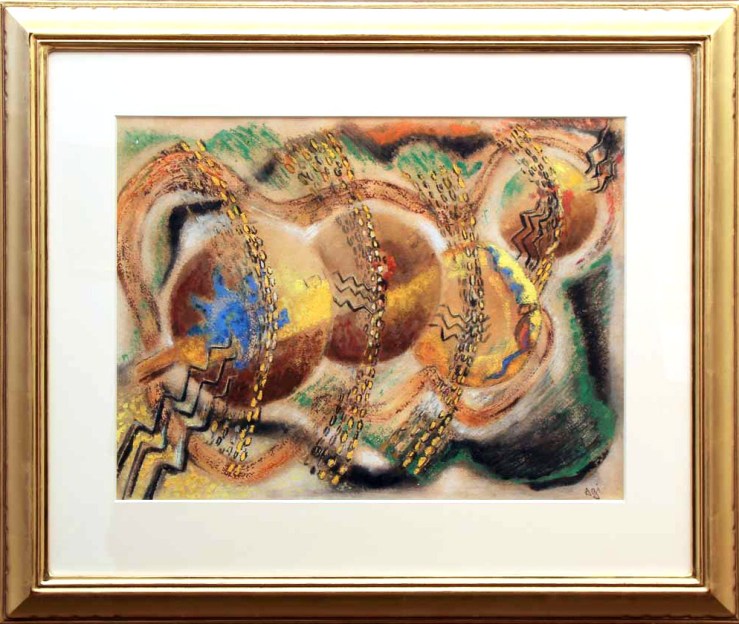 Agnes Sims, Dance Rattles, Watercolor on Paper
Agnes Sims, Dance Rattles, Watercolor on Paper
SIMS
Morang’s Canyon Road neighbor Agnes Sims (1910-1990) was born in Devon, Pennsylvania. She managed a marionette theater and worked as a textile designer in Philadelphia before moving to Santa Fe in 1938 and founding a Canyon Road artist’s compound. In New Mexico, she took an interest in the ancient petroglyphs of New Mexico’s Native American Pueblos, and received a grant to study and sketch them. Her archaeological work inspired a series of paintings and sculptures in which she developed her own semi-abstract symbolism.
Sims’ longtime partner was the literary editor of Harper’s Bazaar, and helped popularize Truman Capote‘s work. Capote was friends (and sometime enemies) with Georgia O’Keeffe. And so the circle comes back around to Andrew Dasburg!
We could do this for ages, but you get the point. The New Mexico art community was a western frontier of avant-garde innovation, forged by a group of passionate friends whose efforts gave birth to the Land of Enchantment of today. And thank goodness for that!
Click here to see all of the artwork in our Spring of Modernism show, and connect with us on Facebook, Twitter and Flickr for daily gallery news.


